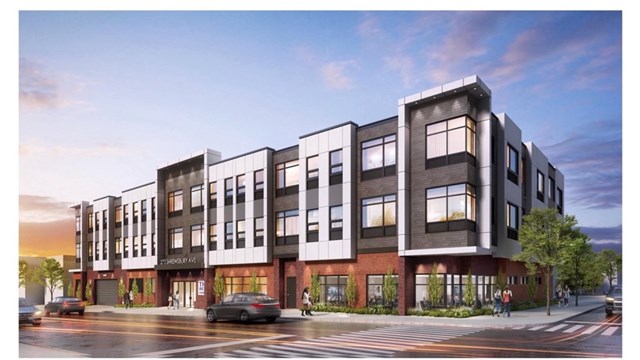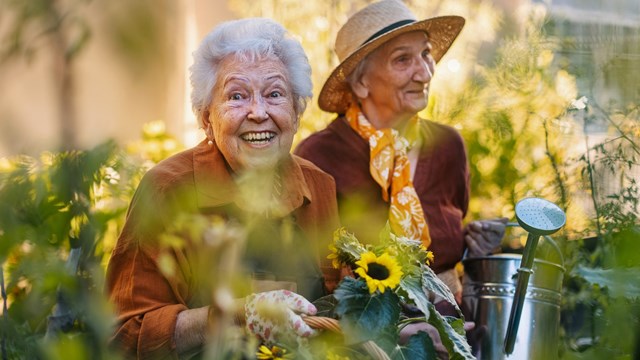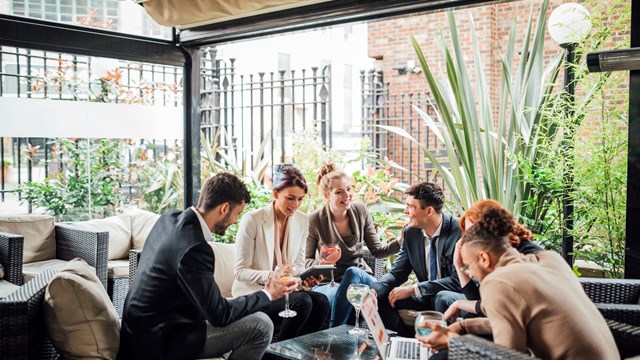Spring is in the air, and with New Jersey finally seeing warmer temperatures, people are heading outside for walks, sports, reading a good book, and maybe even some friendly interaction with their neighbors. And let’s face it, after a few years of being fearful of running into people at all, co-op and condo residents are feeling less isolated—and many are craving those conversations.
Community leaders can do their part to encourage this social interaction by planning social events and programs that engage residents. After all, a community that is filled with good neighboring is a happier one for people to live in.
According to Vincent Rapolla, regional director for Corner Property Management in Springfield, having social events in a community helps to build and enhance the overall sense of community in an association—and that adds intangible—but very real—value to the property as a whole.
“When residents get to know each other, they truly become neighbors, and even friends,” he says. “Most importantly, having positive relationships with neighbors improves everyone’s quality of life, which is one of the main objectives of community living.”
Thomas Chilenski, president and senior property director for Cedarcrest Property Management in Fairfield, which has approximately 65 properties and manages about 6,000 units, says community activities get everyone on the same page, which encourages social cohesion and can help reduce the likelihood of conflicts over the longer term. Plus, “people want to get out and meet people,” he says. “It’s a great way to make the community a happier place to live.”
Harold Berlowe, director of sales and project management for Denali Property Management in Chester, agrees. “When you connect with and get to know the people around you, there is a much better chance of working together to better understand and resolve problems,” he says. “Social interaction allows residents a chance to understand how others see the world and provides different perspectives that promote creative problem solving. Residents learn to respect each others’ viewpoints and find less of a need to adamantly defend their own.”
The Impact of COVID
Like everything else, the pandemic has had a significant impact on common interest communities on several levels. Residents may indeed be much more interested in getting out and socializing now that the crisis has ebbed; however, not necessarily in the same ways as they might have been before COVID.
“In-person events are back,” Berlowe says, “but with precautions in place with masks and hand sanitizer available to all, and requests to not attend if someone is feeling ill or experiencing symptoms. More residents are working from home, so they’re more aware of issues at the community and may be experiencing more unwelcome interactions with their neighbors [than before]. This has created more stress on the residents and management.”
The pandemic created both immediate and residual challenges for residents and management alike in maintaining social connections—along with basic civility, understanding, empathy, and a sense that we’re all working towards a common goal. A good property management company—or a good property manager—will recognize these challenges and work diligently with their client boards and homeowners to maintain connections, manage expectations, and foster positive, productive communication.
Chilenski notes during the first years of the pandemic, most residents just sat around in their houses feeling isolated and stressed, and there was a lot of time for people to point fingers and blame each other for every little thing that might have come up at the property. However, “when you actually get people together or have a common forum to talk, it really seems to calm things down, and the more human side of things comes out,” he says.
Brainstorming Ideas
Between work, family, and other obligations, getting people together isn’t always easy, so it’s often up to the board, property manager, and, if applicable, the community’s activity director to work together to plan and schedule events and activities. “Seeking owners’ input and suggestions is always a good idea,” Berlowe says, adding that “while some events can involve multiple objectives, it’s sometimes better to stick with a simpler plan and add events if needed.”
For Cedarcrest’s client properties, Chilenski says, the boards take charge in coming up with ideas for events and activities, though management advises and recommends ideas as much as possible. “But at the end of the day, it’s the board members who make the final decision on any of this stuff. If they don’t want to do any of this, our hands are tied.”
To spread the work around and avoid having the burden of planning, scheduling, and coordinating events or programs fall on one person, Rapolla recommends organizing event or social committees for both brainstorming and logistical purposes. “That can be really beneficial,” he says. “Provide a budget, date, and general idea and let the committee run with it.”
What to Plan
So you’ve decided to convene a social committee at your building or HOA, or your board wants to be more proactive in hosting events for the community. Great. But what types of events and programs work best? What’s most likely to interest residents and get them to come out and participate? The pros agree that when considering what types of events or activities to plan, the first step is identifying specific goals for the event. For example, it could be something very specific and concrete, like fundraising for a project or celebrating a holiday, or it could be something more abstract, like improving communication or conflict resolution. It could also be something as simple as pure entertainment.
Berlowe says his firm has engaged in many community events to promote goodwill and to assist community residents. For example, “when we first start managing a new association, we hold an owners’ meet-and-greet event that brings our property management team on-site, offers refreshments like wine and cheese after work, or coffee and donuts on a Saturday morning, and creates an informal and welcoming atmosphere. This allows us to introduce our company and team to the homeowners and residents, and to share important information regarding our protocols, procedures, and contacts.”
The company also brings laptops to personally assist any homeowners who are struggling with registering for or logging in to the firm’s resident web portal.
When it comes to more purely recreational events, the possibilities are really only limited by imagination and budget. “We’ve put together barbecues, ice cream socials, Halloween parades, decoration contests, poolside happy hours, and community clean-up days for some of our communities,” Berlowe says, “and find most of these to be very popular. With budgets being tight these days, holding fundraisers to support small community projects like a new swing set or gym upgrades are also a great way to both connect residents and raise money.”
With kids out of school and many parents taking time off from work, summer is one of the easier times to plan activities—plus, the nice weather has people longing to spend time outside.
“At one community we manage, we held an after-summer barbecue in the courtyard the week after Labor Day,” Berlowe says. “We kicked in towards the food and beverages and volunteered to work the grills. It was so popular amongst residents that they have since requested that we not wait until after Labor Day this year—so we’re planning a Start the Summer Right BBQ this coming June.”
Chilenski notes that a number of communities his firm manages do some really cool stuff as well. For instance, one community holds a movie night at their pool; another brings in a pizza truck to get people to meet and talk; another hosts an ice cream party in the summer. “There’s so much you can do,” says Chilenski, “and this seems to be the year where everyone is much more gung-ho about getting back and living the way we did before COVID happened. A lot of stuff centers around when kids get off school, and you try to fit in things before people leave for vacations.”
Rapolla says his firm has had great success with ice cream socials and barbecues in warmer months and hot cocoa events in the fall and winter. “Usually, the smaller events more often tend to bring out more residents and we’ll have one larger event per year,” he says. “After a good event, you can tell the tone of the community changes for the better.”
Clubs & Small Activities
Sometimes, residents themselves will form their own clubs or meet-up groups on their own. Many residents like to get together to play cards, discuss books or movies, or even cook together and discuss recipes.
“We’ve found that smaller group events like these are best left to individual residents to organize and participate in,” Berlowe says. “Oftentimes, these are done at the homes of individual residents in rather small groups of maybe four or six people. We actively encourage things like book and wine clubs, card game nights, etc., and will facilitate communications and contact info for these types of activities.”
Bringing in Experts
Another great way to bring people together in a community is to hire a lecturer or speaker to come in and discuss an important subject. This could be an author, professor, local politician, or just someone with an interesting story.
Berlowe says this is a great way to combine something fun, educational, and beneficial to the community. “We will often organize a ‘Lunch and Learn’ seminar or webinar that allows us to bring in professionals from varied fields, like accountants, lawyers, insurance brokers, financial planners, engineers, etc., to discuss common-interest communities in general, and specific issues to that association,” he says. “By educating homeowners on these various topics in an informal and friendly atmosphere, it fosters better understanding of what goes into being a member of a common interest community, reduces fear and stress related to the unknowns, and often results in homeowners getting more involved.”
Beautification Projects
Organizing community beautification projects, such as spring plantings, fall leaf-raking, grounds clean-ups, or pool furniture cleaning, is another great way for smaller communities to get residents working towards a common goal while keeping costs down.
“As long as [the project] is kept simple, limited in time and scope, and some incentives are offered—like pizza and refreshments—you can ensure maximum participation,” Berlowe says. “We have participated in these events with our employees to demonstrate how the collaboration between property management and owners/residents leads to better outcomes.”
Organizing a recycling or composting project is also a great way to get residents coming together for a great cause. “A lot of communities have committees that center on things like this,” Chilenski says. “It’s just another great way to have more people involved, and spreads good will throughout the community.”
Busy lives, demanding jobs, and family activities will always compete for residents’ time and energy, but many would appreciate—and take advantage of—the chance to get to know their neighbors better and feel more a part of their community. Whether through management, the board, a committee, or a joint effort, social programming and events can help do just that—with real, long-term benefits for everyone.
Keith Loria is a freelance writer and contributor to CooperatorNews.










Leave a Comment